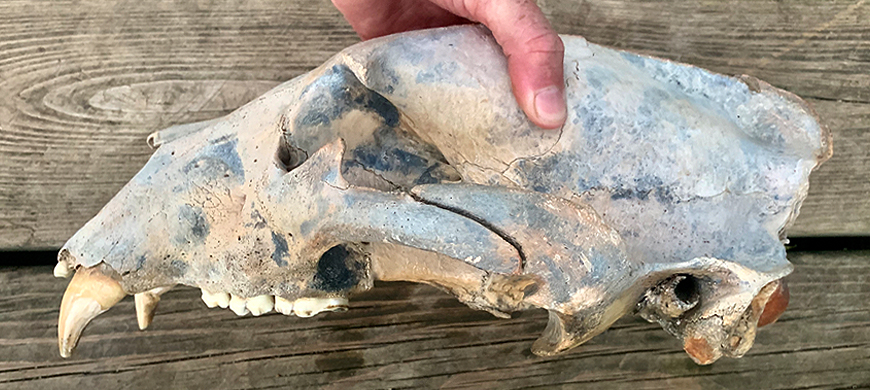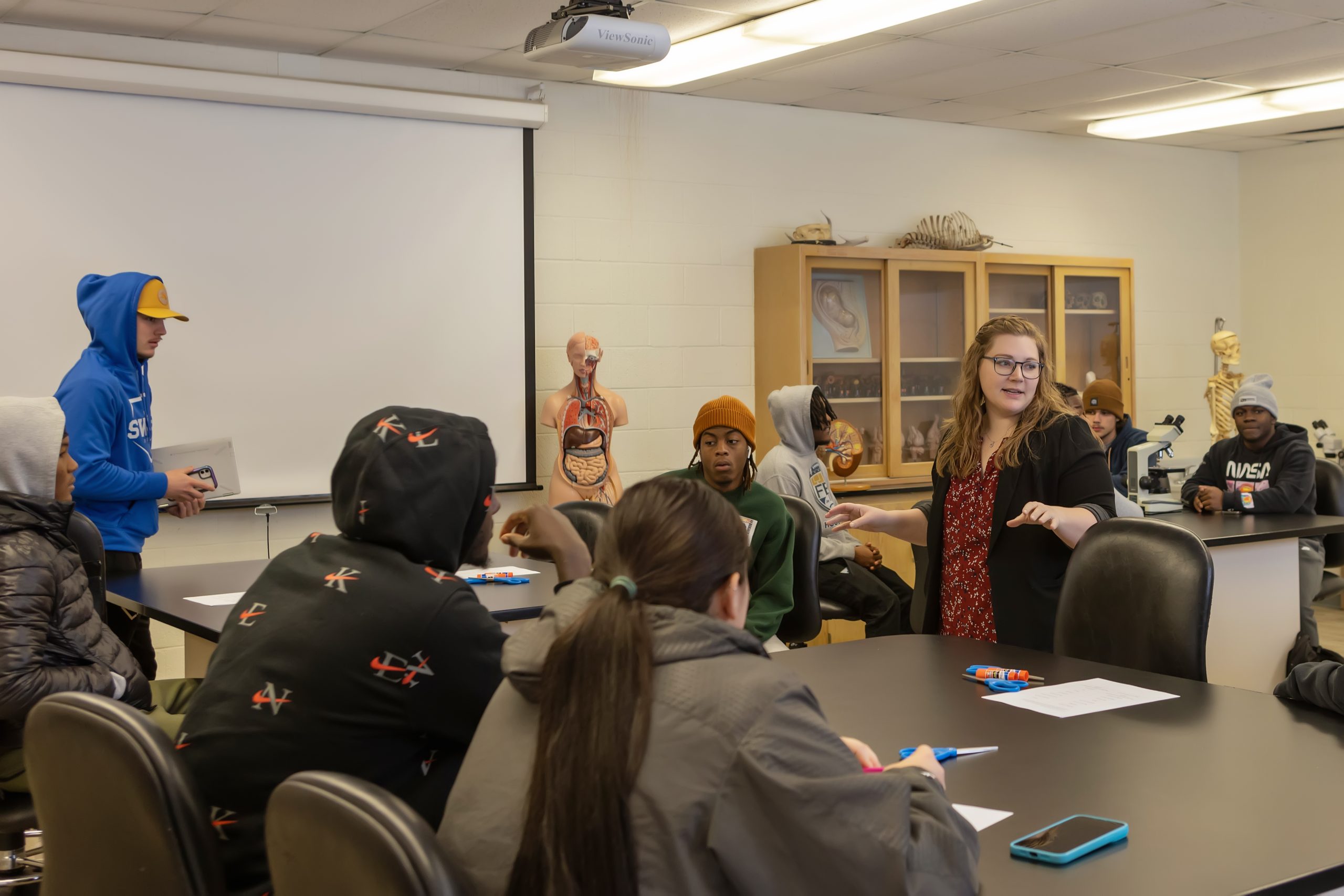A mid-August kayak trip down the Arkansas River in southcentral Kansas took a fascinating turn for sisters Ashley and Erin Watt when they happened upon a massive skull protruding from a sandbar. It was partially buried nose down, but they immediately knew the shape was unique. When they pulled it from the sand and saw the large teeth of a carnivore, they knew they had something special.
With a little research, Ashley and Erin determined they had likely found a bear skull. They shared their exciting discovery in a Facebook post, which caught the eyes of local Kansas Department of Wildlife, Parks and Tourism (KDWPT) game warden Chris Stout. Stout shared the photos with colleagues, and they eventually reached Sternberg Museum of Natural History paleontologists Dr. Reese Barrick and Mike Everhart who provided insight into the significance of the finding.
While Barrick and Everhart quickly verified the sisters’ suspicions that this was a bear skull, the large size – approximately 16 inches long by 8.5 inches wide – and fossilized appearance left them questioning whether this was a modern grizzly or a more primitive species from the past. The skull is believed to have been deposited into the Ark River sands – an excellent substrate for preservation – and maintained there until it was displaced by this year’s historic floods.
“The bear skull was washed out of the same river sediments that routinely produce the skulls and bones of the American bison, some of which could date back as far as the last Ice Age,” said Everhart, who serves as the Adjunct Curator of Paleontology at the Sternberg Museum. “Whether it is hundreds or thousands of years old, the skull gives us a better insight into the richness of life on the plains before Western man.”
Grizzly bears are native to Kansas and are thought to have occurred throughout most of the state, but history suggests the species was likely extirpated by the middle 1800s. Perhaps the most likely scenario is that this skull did belong to the modern species. Though old enough to have partially fossilized, the skull is in excellent condition; except for the loss of a few minor teeth, it is largely intact and minimally worn.
Though there are several historical accounts of grizzly bears in Kansas, this could be the first physical evidence of their former presence, pending species verification, of course.
“It’s been pretty amazing not only discovering the skull but also the crowdsourcing used to determine how truly exceptional this find is,” said Ashley. “We can’t wait to see what further information can be uncovered about this incredible animal.”
Ashley, a former agriculture teacher at Oxford Jr/Sr High School, and Erin, an Animal Science student at West Texas A&M University, have graciously donated the specimen to the Sternberg Museum in Hays.



